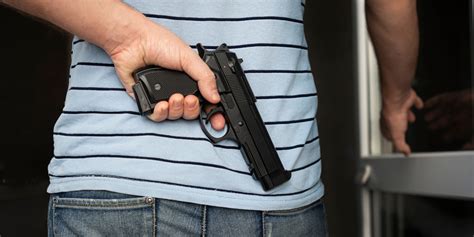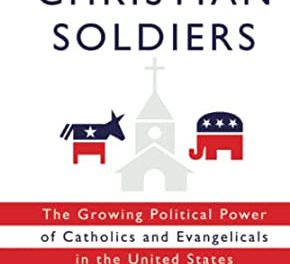Few will deny that gun violence has dominated the news periodically during the last eight years. Terrorist attacks, vengeance killings, acts of inexplicable violence by deranged characters, and regular weekend murder tallies in major cities, Chicago most notably, all have resulted in the deaths of hundreds.
Amnesty International has weighed in on the matter in tones one might regard as pontifical: “The sheer volume of people killed or injured each year in the USA by gun violence is staggering. Our government has allowed gun violence to become a human rights crisis.” So reports Al Jazeera, perhaps not the most respectable source, but facts are facts.
What Amnesty International means by “our government” and its imprimatur on “gun violence” baldly suggests the problem resides in the Second Amendment. A responsible state, the standard logic goes, would never permit its citizen easy access to firearms.
But even people who don’t subscribe to that argument find themselves appalled at the regularity of mass shootings. One may look askance at Newsweek’s claim that one mass shooting takes place each day in the U.S. Nevertheless, taking the new FBI definition of “mass shooting” — a public attack with three or more killed per incident — statistics show that mass shootings have risen noticeably since the 1960s. According to Dr. Nicki Lisa Cole, writing earlier this year, the 80s saw approximately five events per year, a number that had risen to forty-two by 2015.
But the figures — which I do not contest — raise another issue. Why the low figure for mass gun-related violence in the sixties when the gun-control movement, inspired then as now by the left, was in its infancy and rather limited in its national effects? If guns could be obtained with ease, why wouldn’t the rate of mass shootings have been at least comparable?
Plainly, it’s not. Curiously, suicide, at present the tenth leading cause of death in our country (cdc.gov), also has risen though not as dramatically. In 1965, 10.8 people per 100,000 took their own lives; nearly fifty years later the figure had risen to 12.6, a figure that doesn’t sound very alarming compared to 1965 unless we think of it as a percentage. Then it becomes a 16.6% increase.
It might not surprise anyone to find that the vast majority of suicides in both years were male: 73% in 1965, 78% in 2013. “Firearms and explosives” were the preferred method in ’65; firearms alone accounted for 77.9% in 2013. Explosives seem to have taken a rightfully marginal place.
These figures of a 16.7% increase overall and a 5% rise in male suicide in such a lengthy period paint a sobering tale of the psychological condition of America. Needless to say, percentages tend to mitigate the hard reality of raw numbers. The larger population of today yields a grim total of families — mothers, fathers, and siblings, all bereft of loved ones.
What does the suicide rate have to do with mass shootings? In the case of terrorism, certainly a major and notorious cause, I suspect very little. Ideology (Charleston) and, more often, Islam (San Bernardino, Orlando) inspire the terrorist. In other instances, despair, anger, revenge, and frustration surface as the common motives — when they can be discerned at all — of the mass shooter.
And here’s some food for thought: When was the last time the papers reported a woman shooting three or more people (the FBI threshold)? San Bernardino is the only one that readily comes to mind, and that was a clear act of Islamist terrorism.
Overwhelmingly, men take their own lives or take the lives of others, in a mass shooting usually as a prelude to actual or virtual suicide. A large number of the stories of mass shootings end the same way: the killer took his own life. When he didn’t, he placed himself in a position where his own death was all but guaranteed. With that in mind, the mass-shooter defines himself as a suicide with a more ambitious agenda: end my life but take others along at the same time. Who knows the motive — simply to make a point, gain vengeance, or a brief enjoy fame?
And here’s another thought: What has happened morally to our country’s young men since 1965? Prayer and church-going, once qualifications for anyone running for political office and signal habits of moral character, have been pushed slowly into the shadows, to the point that now active membership in the Roman Catholic Church, or in any Christian body where the centuries-old doctrines of the faith are actually believed, disqualifies one for nomination to the Supreme Court. The Christian virtues of fidelity to God, duty to one’s country, love of a spouse, and charity to neighbor have become less and less the pith and marrow of the American character, largely because the first of these, fidelity to God, has lost its place in the national psyche.
Too many young men, the main perpetrators of violence against self and others, grow up hearing that God isn’t watching, women are easy, welfare is superior to work, and drugs and alcohol supply the peace that passeth all understanding. If they’d learned the opposite, our country might have been spared at least certain horrors that have become, if not daily, monthly and bi-monthly headlines in 2018.v
Call it trite to declare the need for spiritual renewal if you like, but we are in dire need of it. If we don’t wake up to the fact, we can expect the death toll to continue to rise.















Or could it just be all the mind altering psycho active “antidepressants “ giving out like candy even though they carry the warning that they may lead to suicidal and homicidal ideation.